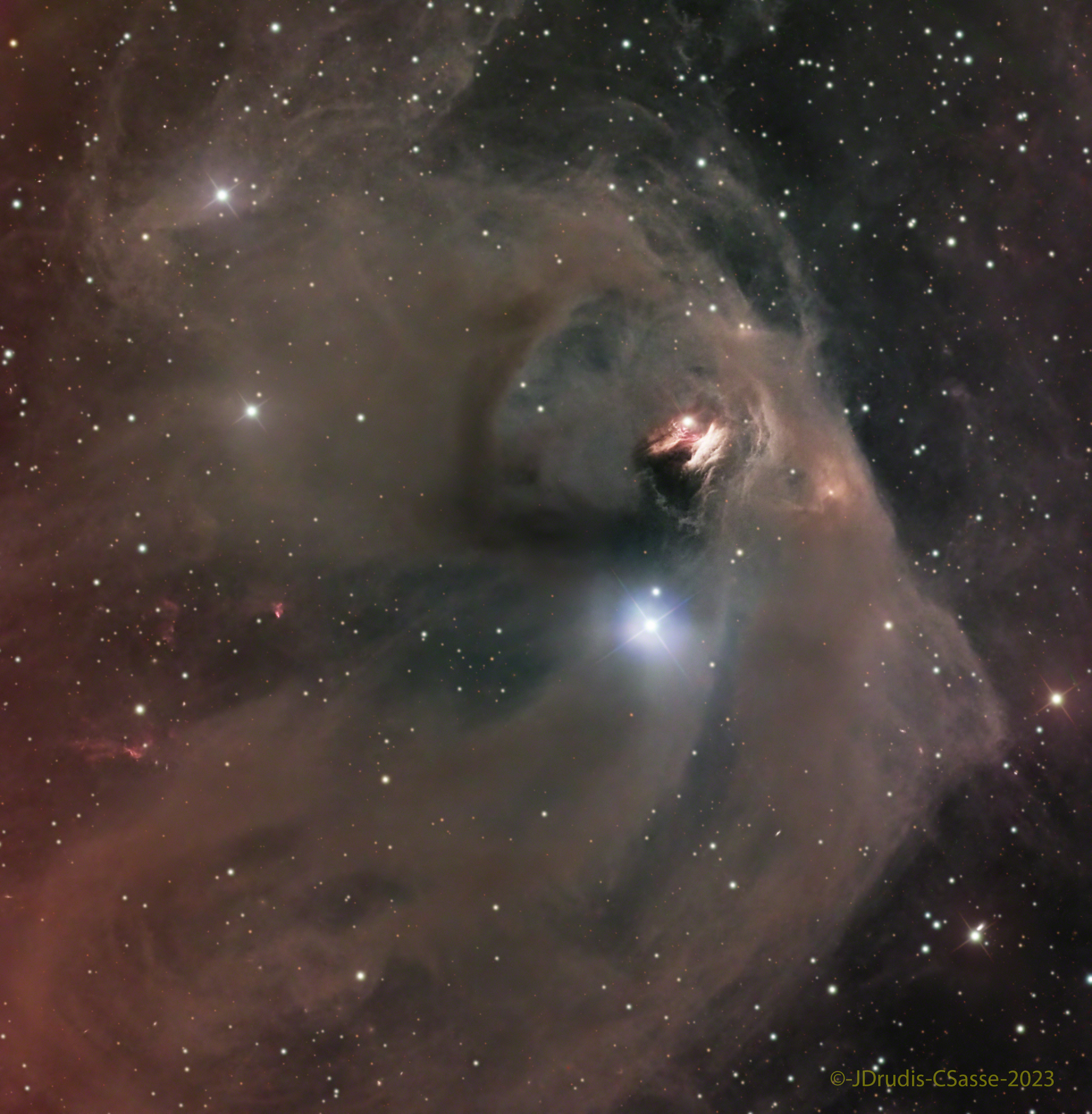Click on the image for a full resolution version
NGC 1555, is a peculiar variable nebula also known as the “Hind’s Variable Nebula.” It was named after the British astronomer John Russell Hind who first observed its variability in the mid-19th century. Situated in the constellation of Taurus, NGC 1555 beckons astronomers with its dynamic nature, offering a window into the stellar birth and evolution.
At the heart of NGC 1555 lies a young and evolving star known as T Tauri (located just above and right of the center of this image), a prototypical example of a pre-main-sequence star in its infancy. T Tauri stars are characterized by their variability, often exhibiting irregular fluctuations in brightness due to processes such as accretion from a surrounding disk and episodic mass ejections. The variability observed in NGC 1555 is attributed to the intricate interplay between T Tauri and its surrounding environment, where expelled material interacts with the surrounding nebular gas and dust, causing changes in its appearance over time.
NGC 1555’s morphology displays intricate structures such as reflection nebulae, Herbig-Haro objects, and bipolar outflows. These features provide insights into the mechanisms driving star formation and the physical processes shaping the surrounding interstellar medium. Reflection nebulae, illuminated by the light of nearby stars, reveal the presence of dense dust clouds, while Herbig-Haro objects mark regions where jets of gas ejected from young stars collide with surrounding material, generating shock waves and intense radiation. Actually, this image displays four Herbig Haro objects, HH 355, the reddish nebula just below to the left of T Tauri, HH 355D, HH 355E and HH 355F, the reddish patches located at the center left of this image.
In 1999, D. Weintraub et al., discovered a protostar very close to T Tauri, using submillimeter images from several different telescopes. This discovery rebooted the interest in this region, because the star formation rate seems higher than expected.
This is the first image that was taken with the same usual equipment but from its new location in Utah (see below).
Additional Information
Object
Name(s): NGC 1555. Hind’s Variable Nebula.
Type: Reflection and emission nebulae
RA: 04h 21m 57s
Dec: +19º 32’ 07”
Constellation: Taurus
Size (arcmin): N/A
Magnitude: N/A
Distance: 470 ly
Image
Date: 2023-12-12 to 2023-12-17
Location: Curiosity3 Observatory, Utah Desert Remote Observatories, UT, USA
Size (arcmin): 30 x 31 arcmin
Telescope: 24” (61 cm) f/6.5 Reflector
Camera: FLI PL16803 (4096x4096pix)
Guiding: Astrodon MonsterMOAG off-axis guider
Total exposure: 13h 20m (L: 7h 20m; RGB: 6h)
Processing: CCDStack, PixInsight (one step) and Photoshop CC 2024

